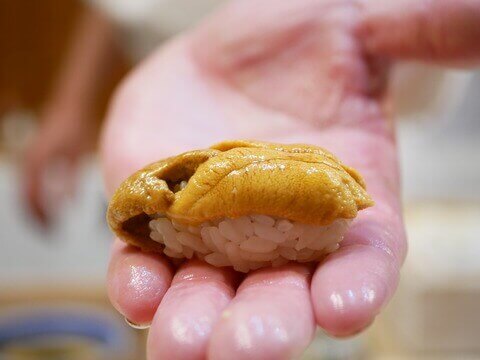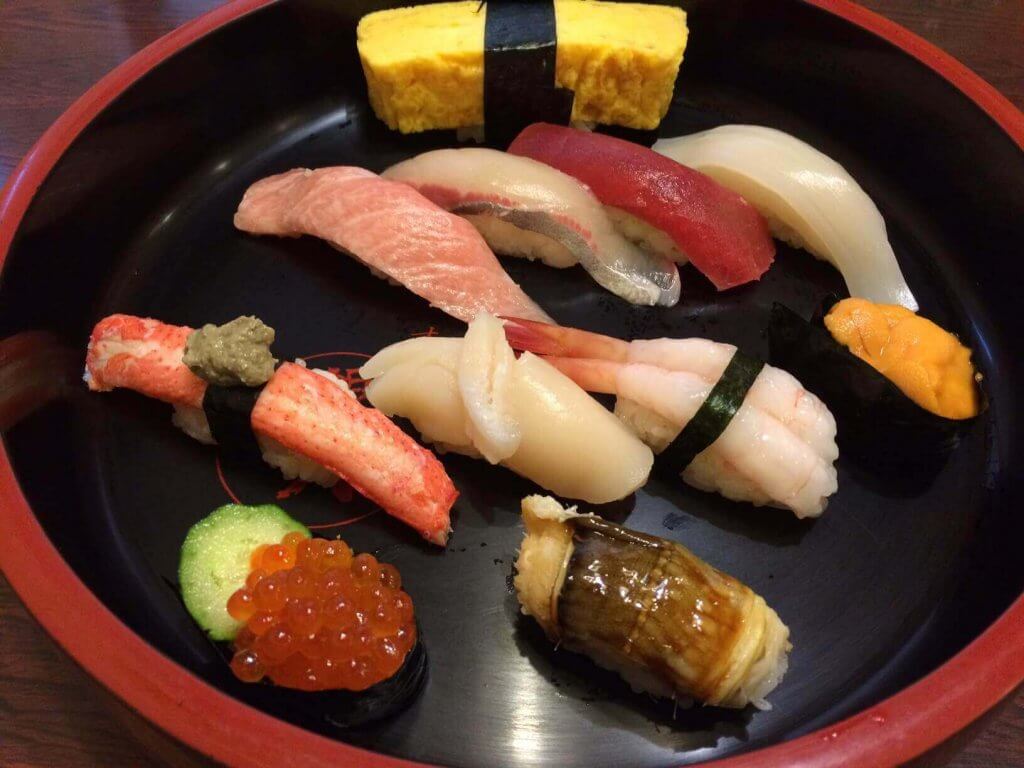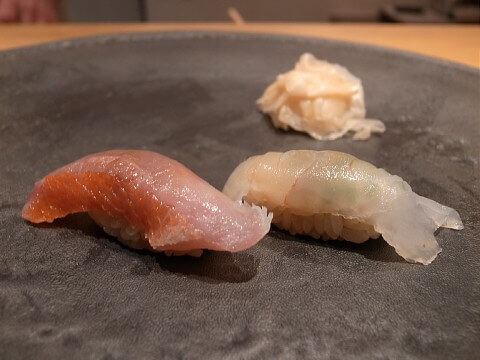What are Omakase, Okonomi and Okimari?
Many people know that omakase, okonomi and okimari are words that refer to ways of ordering Nigiri-sushi ordered at a sushi restaurant. However, there is a reason for the circular expression, “Nigiri-sushi ordered at a sushi restaurant,” and these three words are the key to understanding that phrase.
Let’s start with the word “omakase,” which you’ve probably heard at least once or twice.
In the past, there were actually only two ways to order at a proper sushi restaurant: okimari and okonomi. The first sushi chef to incorporate an omakase course at his restaurant is said to be the legendary Shigezo Fujimoto (born in 1902). Until that time, the term “omakase” referred to leaving the food order to the chef at a Japanese restaurant. However, in that case, the chef would ask the customer what type of food they want to eat and how they want it cooked before proceeding. The customer would not just sit in their seat and wait to be served without any input at all.
The Wikipedia explanation of omakase is, “Customers ordering omakase style expect the chef to be innovative and surprising in selecting dishes, and the meal can be likened to an artistic performance. Ordering omakase can be a gamble, but the customer typically receives the highest-quality fish available at a lower cost than if it had been ordered à la carte.” This doesn’t seem exactly correct.
So what is omakase at a sushi restaurant?

To go into a bit more detail, one style consists of five to ten side dishes served during the first half of the meal, and ten to 15 pieces of nigiri-sushi served during the second half of the meal and another style consists of side dishes and nigiri-sushi served alternately, where the customer can enjoy their sake of choice. In either case, once the customer is seated, they will be served sushi and other dishes, and have the attention of the chef at the perfect pace of about two hours. If there is time after the course is complete, the customers can order additional sushi toppings they want. In other words, omakase is the most modern form of okimari, and any customer can feel order omakase comfortably.
Also, nigiri-sushi is prepared with shari (vinegar rice), topping, wasabi, and soy sauce. As a general rule, no other ingredients are used. For example, sushi that includes mayonnaise is categorized as ‘creative sushi’. Unlike sushi rolls, nigiri-sushi is not a place for sushi chefs to express originality. In other words, the Wikipedia explanation “Customers ordering omakase style expect the chef to be innovative and surprising in selecting dishes, and the meal can be likened to an artistic performance,” is incorrect. Of course, even if the appearance of nigiri-sushi is the run of the mill, the chef may incorporate innovative ideas in the preparation work. Also, “Ordering omakase can be a gamble, but the customer typically receives the highest-quality fish available at a lower cost than if it had been ordered à la carte,” but in actuality, omakase is a very advanced compromise between both customer and the restaurant and is not a ‘gamble’ in any way. Also, no items are served that are more expensive than what could be ordered a la carte.
Omakase is the optimum system for contributing to effective business operation from the restaurant’s perspective, not from the customer’s perspective. This system means that the restaurant doesn’t need to procure toppings that it may not be able to sell. It also allows the chef to efficiently make nigiri-sushi to be served. There is no hoping or guessing whether another customer will order the same chu-toro that another customer ordered. Moreover, omakase is a way for sushi restaurants to gain new customers from a demographic that doesn’t know much about sushi toppings (such as businessmen who are treating clients). Even though most high-class restaurants have adopted this method, the reason is not common knowledge.
Next, we will explain ‘okimari’.

We would like to explain “nami” “jo” and “tokujo”, which are the most commonly used terms. We’ll teach you which to choose when faced with these three choices.
When you go into a sushi restaurant and look at the menu, you’ll see the terms “Nami (並)” “Jo (上)” and “Tokujo (特上). Japanese people know from the kanji that “Tokujo” is the best, but generally, they don’t know what the specific differences are.
Today we’ll explain what each set consists of. If you order “Nami” for one person, this is the typical course:
Tuna Akami: 1 pc. Salmon: 1 pc. Shiromi (white fish): 1 pc. Silver-skinned fish such as mackerel: 1 pc. Raw squid: 1 pc. Octopus: 1 pc. Egg: 1 pc.
That’s 7 nigiri pieces and there might be 4 cuts or so of dried gourd or cucumber rolls. To be more specific, the whitefish may be different each day, depending on what the restaurant has. The silver-skinned fish is also often changed to something like Kohada. The octopus will have been frozen. If the course includes shrimp, it will always be a giant tiger prawn (also called black tiger prawn).
If you’re a bit more adventurous and go for the “Jo” course, you’ll be served 9 pieces of nigiri sushi. Fatty tuna (chutoro) is added to the lineup, which means that with the Akami that’s two of the most popular toppings. But you won’t get the salmon. Depending on the season you may be served bonito. The shrimp may be changed to sweet shrimp. Salmon roe will also be added, making the set more colorful. The thin rolls are changed to tuna rolls.
When you upgrade to the “Tokujo” set it will include conger, which takes time to prepare, and the whitefish will be top class flounder or sea bream. You will also be served more delicious parts of the tuna. The higher cost means you will get higher quality sushi, which is represented by the prawns and sea urchins. The egg nigiri is upgraded to a thick egg omelet and it will also include something like a bloody clam. All this will go into 10 beautiful nigiri pieces and rolls worthy of an Instagram pic.
The price of “Jo” is twice that of “Nami”. So “Tokujo” at triple the price is really an excellent deal. Considering the value of the toppings, the price is unbeatable. The “Nami” set is made up of toppings in the “Nigemono” category (Nigemono includes salmon, squid, kohada, octopus and egg toppings. Inexpensive items at sushi restaurants are known as nigemono. The more nigemono you eat, the more the sushi restaurant profits.) To put it bluntly, this set only includes toppings that are cheap and have a variety of uses.
Psychologically people tend to choose the average, so when presented with “Nami” “Jo” and “Tokujo,” an overwhelmingly large percentage of people choose “Jo.” “Tokujo” is a bit expensive, but you came to eat sushi so “Nami” isn’t going to cut it. You select “Jo,” right in the middle so you won’t be judged. The people running these restaurants know this well and they set items they want to sell the most at the “Jo” price. The items they want to sell the most are those with the best profit margins, so usually, these are in the “Jo” set. This is exactly what the restaurant wants.
However, they can’t do that for the “Tokujo” set. “Tokujo” is the pride of the restaurant and they want to preserve the quality. Even if they change the type of topping, it will be a topping worthy of “Tokujo”. They don’t want to serve their most expensive dishes and have a disappointed customer.
So if you’re going to pay for sushi anyway, it’s better to pay just a little bit more for the “Tokujo” course.
Next we will explain ‘okonomi’.

It seems simple, but a certain level of sushi topping knowledge and experience to be able to confront veteran sushi chefs are required to enjoy okonomi. You can’t order winter seasonal toppings on a hot summer day. And nothing good comes of casually asking the chef what the day’s special is. There are certain sushi toppings that the restaurant has to sell that day (for example, items that were procured days before that have lost their transparency, and become cloudy. These items can be used for grilled or boiled fish). The more experienced a sushi chef is, the more likely it is he will serve toppings that he wants to use up, without letting on to this fact to the customer. This strategy doesn’t work for regular customers or critical sushi fans/experts who may retaliate, so the only targets for this sly move are new customers visiting for the first time. Keep in mind that there are sushi restaurants that do this. Just to be clear, most sushi restaurants do not do this.
But you don’t need to worry. It is rare for a high-class sushi restaurant to offer okonomi anyway. The reason is, it would be a horrible ordeal if, for example, the restaurant was left with unsold natural kuruma prawns that were procured at the US $20 per prawn. On the other hand, with omakase, which is the norm at most sushi restaurants, the chef can procure only the volume needed for the reservations and there is no concern for leftovers. But what about sushi restaurants rooted in local, residential areas? Naturally, they offer okonomi menus. These restaurants have many toppings lined up in a glass case in front of the customer, so they end up with ingredients that they need to use up. In these cases, those pieces will be used in the lunch menu or as toppings in sashimi bowls. The last resort is for the staff to eat it.
However, ordering okonomi at certain high-class restaurants will leave you with an outrageous bill at the end. This is because certain items in an omakase course, for example, chu-toro, are served at a price with a lower profit margin, and instead, the price of the course is set for an overall target profit. However, ordering okonomi means that each piece is priced for individual profit margins, making it far more expensive. Furthermore, the prices are not listed and you can’t very well check the price before eating each piece, so there is no telling what the final price will be. If you choose to order okonomi, be prepared to pay about twice what you would with omakase.
However, customers who order okonomi are given preference, exactly like frequent customers, for parts of the fish they like, and rare parts. The advantage to ordering okonomi, is the customer may pay the same price as the customer next to them, but enjoy a menu richer in content with toppings they are more satisfied with. In other words, if you choose omakase or okimari, you won’t be served anything outrageous, so you won’t be taken off-guard when it comes time to pay. On the other hand, choosing okonomi is an opportunity to experience the true charm of sushi restaurants and also have a brand new experience.
Finally, I’d like to add some information about seaweed rolls. Whether you choose omakase okimari or okonomi, you will be served sushi rolls wrapped in seaweed after a course of nigiri sushi. Seaweed rolls, such as kanpyo maki, are also known as “maki-osame” which means to “wrap-up” the meal. But, I’ve never seen anyone ask for multiple orders of rolls, like tekka maki (tuna rolls) and then kappa maki (cucumber rolls) after that. Please use this for your own reference.